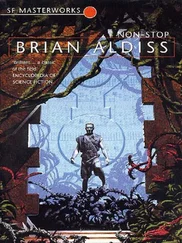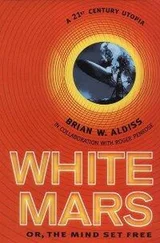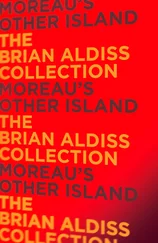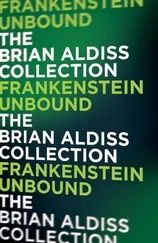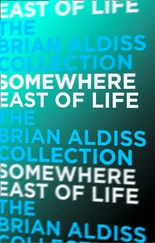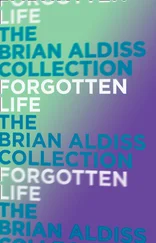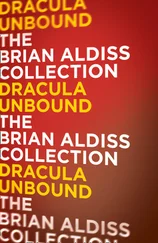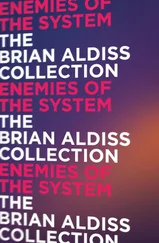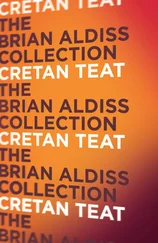The mystery illness that had stricken the hydrologists served as a warning that it was not simply from the void that dangers could strike. Humanity carried with it many metabolic organisms that eluded interrogation.
At least the disaster led to more cautious preparation for large vessels attempting the gulfs of space. Any person going aboard was subjected to rigorous medical examination which included a period of quarantine.
A rocket named Zubrin was the second piece of UU hardware to cross the approximately 50 million miles to Mars. All launches, including this one, were scheduled to take advantage of the best possible mutual orbits. More advanced than the hydrologists’ ship, it carried on board no living thing, only an android robot of some size and strength. The android survived both the flight and the landing, whereupon it proceeded to unload building materials, emergency food rations, and some tanks of oxygen, in preparation for future settlers.
‘For my next trick …’ as the android would have said, had it the wit, Zubrin turned itself into a drill and began to drill down through the regolith in the expectation of hitting subterranean water.
All this in preparation for the arrival of human beings, poor frail biological constructs who would need water – and much else besides. Later, later … Politics thrives on delays.
First of all, the UU, still developing and having now signed up Moscow University, pursued the programme known as D&D (standing for Distance and Danger). The distance problem was regarded as a ten-month ordeal, sometimes less. It had to be endured between Earth and Mars. New faster space planes were cutting journey times. Humans back in the Paleolithic age had accustomed themselves to dealing with distances, when hunter-gathering enforced ceaseless movement of groups and tribes. The challenge of distances in space was met by the development of a plasma drive, instead of a chemical drive, which made journeys faster and a good deal safer.
There still remained among the dangers exposure to radiation during the journey. Three forms of radiation were known, protons emanating from the Sun, heavy ions from cosmic rays, and the newly discovered normon, radiating from the Oort Cloud. (At this time, the normon was regarded as benevolent, indeed as a helpful propagator of microscopic life on early Earth.)
If shielding were added to the space vehicle it would slow its progress, prolonging time of exposure. Cataracts and cancers would still occur. For at least another century, the visit to Mars was generally regarded as a one-way trip. Only Barrin was to make it both ways.
Still, there were those, and not the most foolhardy either, who spoke out to say it was necessary to leave Earth, an Earth by now riddled, like death watch beetles in old timber, with threats including random procreation (now recognised as another contribution to global warming), new super-bugs, missile systems, and hostile and distraught dictatorial states. Supposing the pioneers were to die on Mars: they were already on what Hamlet had termed ‘a place from whose bourn no traveller returns!’ Corpses would be wrapped in polythene and left to mummify by an outer wall.
The first arrivals, sponsored and supported by UU, found themselves suffering from many lesser maladies which light Martian gravity did little to heal. Brave hearts had had less reason to pump strongly in the weightlessness of the journey. Bones and muscles had been weakened, despite rigorous exercise-routines compulsory on the trip.
Broken bones were frequent – but lo! The miracle! There one stood on the planet Mars – even if only with a crutch! Space anaemics, deficient in red blood cells, vied with the crippled for beds in temporary Martian hospital wards. Even injured, they set machines to building permanent bases, the towers – all under the watchful eye of Barrin.
Six towers now stood on the Tharsis bulge. Some towers were taller than others, some more substantial, depending on UU contributions. There were connections between all of these outposts of humanity and also, inevitably, some mistrust, the dregs of old hostilities. In the settlement, West and Chinese were closest and in friendly communication.
For stay-at-homes, photographs of the half-dozen buildings standing in defiance on the Tharsis Shield were as popular as studies of Earth seen from Moon had once been, or kittens wearing ribbons still were.
5 5. The Shape of the UU 6. Mangalian Among the Ladybirds 7. The Care of a Child 8. The Death of a Hero 9. Life Elsewhere? 10. The Inevitable Happens 11. A Belated Announcement 12. Mulling Over Required 13. Some False Dispositions 14. The Mad Horse & Ooma’s Sad Poem 15. An Hour’s Friendship 16. Shap’s Lecture 17. Interlude: A Farewell To Families 18. Interlude Part II: A Long Journey and A Short Walk 19. The Vexed Question of Umwelts 20. A Troubled Exwo 21. Images of the Past 22. Phipp has Problems to Share 23. The Four Birds 24. Consolations of Knowledge and Sex 25. Meeting an Astronomer 26. Life on Mars! The Capture of Things 27. Hitting the Trail 28. Some Problem for Mangalian 29. Questions of Evolution 30. Precious Discoveries 31. Visitors 32. Descendants from the Present 33. Reception in the China Tower 34. A Great Resource Footnotes Appendix By the same author from The Friday Project Copyright About the Publisher
The Shape of the UU 5. The Shape of the UU 6. Mangalian Among the Ladybirds 7. The Care of a Child 8. The Death of a Hero 9. Life Elsewhere? 10. The Inevitable Happens 11. A Belated Announcement 12. Mulling Over Required 13. Some False Dispositions 14. The Mad Horse & Ooma’s Sad Poem 15. An Hour’s Friendship 16. Shap’s Lecture 17. Interlude: A Farewell To Families 18. Interlude Part II: A Long Journey and A Short Walk 19. The Vexed Question of Umwelts 20. A Troubled Exwo 21. Images of the Past 22. Phipp has Problems to Share 23. The Four Birds 24. Consolations of Knowledge and Sex 25. Meeting an Astronomer 26. Life on Mars! The Capture of Things 27. Hitting the Trail 28. Some Problem for Mangalian 29. Questions of Evolution 30. Precious Discoveries 31. Visitors 32. Descendants from the Present 33. Reception in the China Tower 34. A Great Resource Footnotes Appendix By the same author from The Friday Project Copyright About the Publisher
Mangalian had had a say in the positioning of this, the settlement, and even the universal sale of its photographs. Under his guidance, the UU’s Mars enterprise progressed rapidly.
He showed undoubted flair. NASA/Beijing had a stable organisation with a patient professional ability to plan projects which would not come to fruition until years later. The UU formed a union with NASA, and benefitted from this planning. The UU/NASA union instigated a raft of interviews and examinations, dedicated to continuous selection of those of either sex prepared to prove themselves good citizens of a distant planet. Only the educated and adventurous need apply. ‘The wise and the wild,’ as news shriekers had it.
The Union issued non-return certificates to those whose credentials had been accepted. Many had already taken up their situations in the Tharsis region, in the towers, accepting that there was no return to planet Earth. Potential colonists continued to join.
Only four years later, a dedicated worker from Mangalian’s main office, Rosemary Cavendish, went to Mars herself. She adopted the humbler name of Noel. A new department in UU/NASA had suggested that terrestrial names should be replaced by computerised names for use on Mars. It symbolised a new beginning, and a marginal amount of finance would be saved. For a while this system was used, eventually to be abandoned in the face of the confusion it caused. Too many people were rejecting their new name from the start.
Читать дальше

